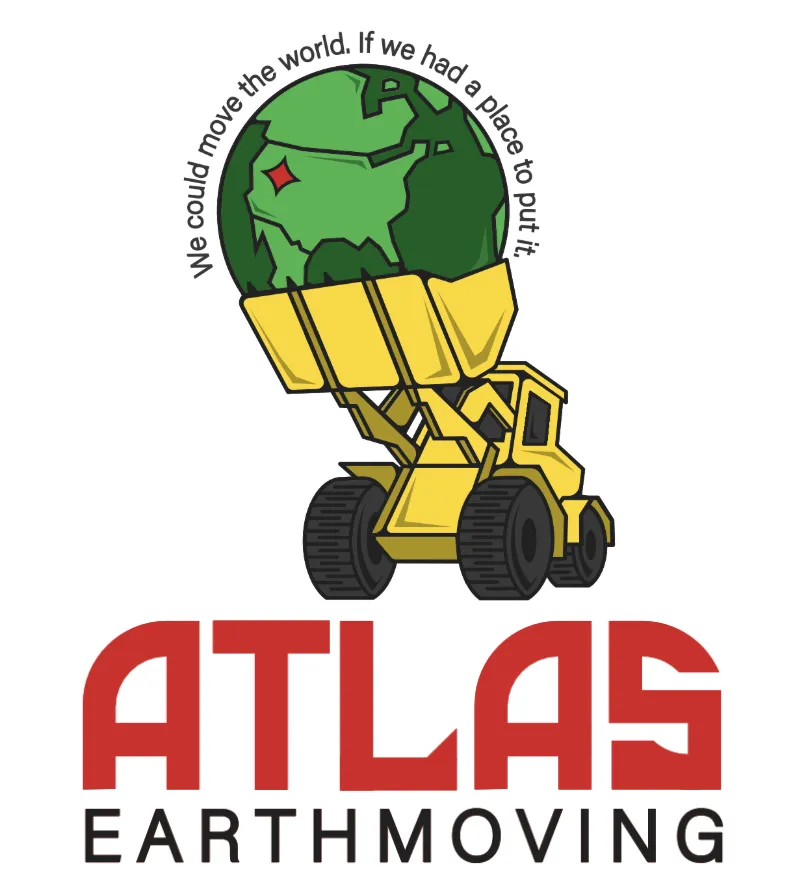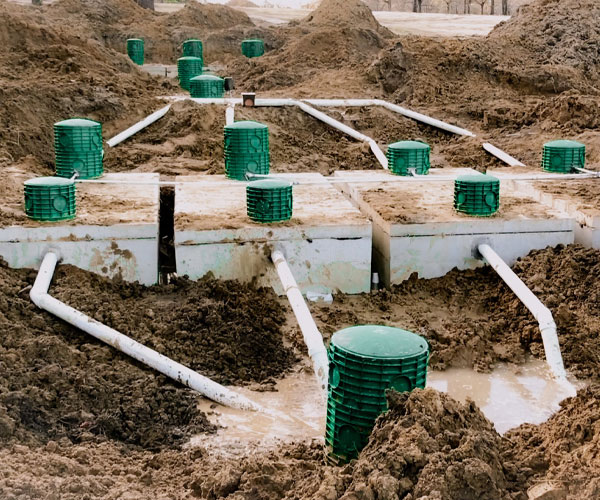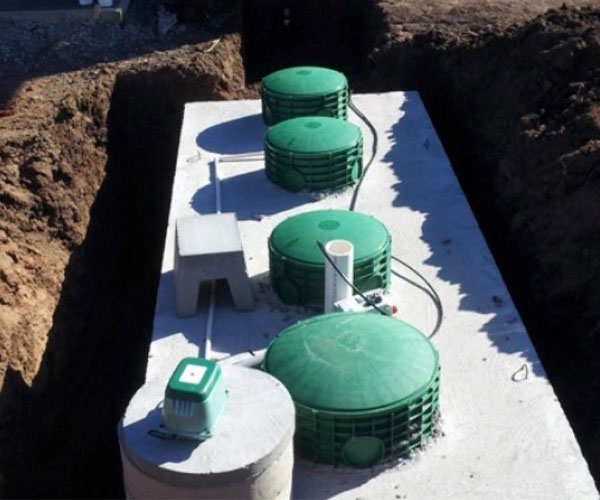
Serving Idaho Counties: Ada, Elmore, Boise, Gem and Owyhee
Aerobic Septic Service near Ada County, Idaho
Atlas Earth Moving is Committed to superior quality and results!

AVOID COSTLY MISTAKES:
Do NOT hire an excavating contractor without first reading our free guide:
The ULTIMATE Excavation & Septic "Success Guide."

Aerobic Septic Service near Ada County: Smarter Wastewater Care for Idaho Homes
Homeowners in Ada County, Idaho, are choosing aerobic treatment units (ATUs) because they clean wastewater more thoroughly than traditional tanks and work on properties where soil or space limits other options. Like any advanced system, an ATU needs consistent, specialized attention. The goal of great service is simple: keep air moving, microbes thriving, and effluent clean while preventing alarms, odors, backups, and costly emergencies. Below you’ll find what professional service includes, the benefits you’ll notice, why hiring nearby expertise matters, and the clear process to book dependable help.
How Can We Help?


Why Choose Aerobic Septic Service near Ada County
An aerobic system uses oxygen to speed up treatment, operating more like a tiny municipal plant than a passive tank. Routine service keeps compressors, diffusers, clarifiers, and disinfection in sync so the water leaving the unit meets quality targets before it reaches your dispersal area. In Idaho’s freeze-thaw seasons, proactive checks help avoid winter failures and spring surprises. For tight lots, high water tables, or landscapes built close to tanks and lines, dependable service protects your yard, your neighbors, and local waterways.
Benefits You’ll Notice Right Away
Reliability tops the list. A tuned ATU cycles quietly and predictably, with alarms that stay silent because floats, timers, and control settings are dialed in. You’ll also see cleaner effluent, which lowers stress on drip zones, mounds, or spray systems so downstream components last longer. Odors fade when aeration is steady and biology is healthy, keeping patios, play areas, and fence lines pleasant. Finally, the environmental payoff matters: better treatment helps protect Ada County’s soils and aquifers, supporting the long-term value of your property.
What Professional Service Actually Includes
Thorough service is hands-on and measured—not a quick glance at an alarm light. Technicians check compressor pressure, verify airflow, and inspect or replace diffusers when needed. They measure sludge depth, clean screens and filters, test effluent clarity, confirm chlorine or UV disinfection, and calibrate floats and timers to the correct settings for your unit. If you use spray heads or drip zones, they verify pressure, flow, and coverage so dispersal remains uniform. Crews also inspect risers and lids, confirm watertight seals, and look for infiltration from roof leaders or sump pumps that can overload treatment. Finally, they document findings and recommend small parts before small problems become big ones.
The Benefits of Hiring an Aerobic Septic Service near Ada County
Local knowledge shortens downtime and improves outcomes. A nearby team understands the soil mixes common around Boise, Meridian, Eagle, and Kuna and stocks membranes, diaphragms, filters, UV lamps, and control boards that fail most often. They know seasonal irrigation habits, neighborhood water tables, and county expectations, so maintenance and repairs match Idaho realities instead of generic assumptions. Because travel is short, response is faster, and recurring visits are easier to keep on schedule—two practical advantages that extend system life and reduce total cost of ownership.
Signs You Need Service Now
Watch for intermittent alarms, louder-than-usual compressor noise, gurgling at fixtures, slow drains, unusually green patches or dampness near the dispersal area, or any sulfur smell. Spray patterns that sputter, drip systems with pressure faults, or a disinfection chamber with empty tablets are red flags that shouldn’t wait. After big gatherings, heavy rains, or construction and landscaping near tanks and lines, a precautionary visit is smart. New homeowners should request a baseline inspection to map components, confirm cycle times, and establish a maintenance history.
See Our Excavation & Septic Services

✔️ Residential Excavation
✔️ Swimming pool excavation
✔️ Basement excavation
✔️Residential Sewer And Water Replacement
✔️Residential Septic Installation And Repair
✔️Concrete Preparation
✔️Small Commercial Site-Work
✔️Residential Gravel And Sight Work
✔️ Demolition
✔️ Large pond Construction
✔️ Small Pond Construction
✔️ Dozer work
✔️ Septic inspections
✔️ Trenching
✔️ Utilities Trenching
✔️ Foundation Repairs
Quality Services Launched FAST!

✔️ Septic system pumping
✔️ Septic installs traditional systems
✔️ Septic tanks - aerobic systems
✔️ Septic tanks - Plastic/poly
✔️ Septic tanks - Concrete
✔️ Drain field replacement
✔️ Grading, lot clearing
✔️ French Drains
✔️ Retaining walls
✔️ Sewer repairs
✔️ Drainage systems
✔️ Full site preparation
What Are You Waiting For?
The Process for Hiring an Aerobic Septic Service near Ada County, Idaho
Step 1: Define goals. Reduce odors, boost performance, prepare for a home sale, or establish a maintenance agreement.
Step 2: Gather details. Note the system brand and model, age, last service date, any alarm behavior, plus photos of lids, control panels, spray heads, or drip valves.
Step 3: Request a site visit and written scope. A reputable provider explains their inspection checklist, the tests they’ll perform, and parts pricing.
Step 4: Approve and schedule. Ask for text or email reminders before each recurring visit so gates can be unlocked and pets secured.
Step 5: Review the report. Expect clear notes on readings, parts replaced, and next steps. Keep these in a home file; they’re valuable during property sales or refinancing.
What a Seasonal Service Plan Looks Like
Most ATUs benefit from quarterly or semiannual visits, depending on household size, tank capacity, and dispersal method. Routine visits include testing, cleaning, and small adjustments. Annual tasks often include compressor diaphragm kits, diffuser refurbishment, and UV bulb replacement. Before winter, technicians insulate exposed lines, verify riser integrity, and confirm alarms work reliably in freezing conditions. In spring, they reassess infiltration, landscaping changes, and irrigation schedules that can influence drainage. Predictable intervals create predictable costs and dramatically reduce surprise callouts.
Cost, Value, and Longevity
Aerobic systems cost a bit more to operate than conventional tanks because aeration uses electricity and disinfection requires ongoing supplies. The trade-off is a smaller footprint, higher treatment quality, and the ability to serve sites that would otherwise need expensive alternatives. With planned maintenance, costs stay steady and surprises are rare. Many homeowners find that consistent service extends equipment life, delays major replacements, and all but eliminates emergency callouts. Over several seasons, that stability more than offsets the incremental operating expense.
Smart Owner Habits in Idaho’s Climate
A few practical habits keep your ATU healthy: spread laundry through the week, fix leaky fixtures promptly, and route roof runoff away from tanks and fields. Skip “flushable” wipes and solvent-heavy cleaners that disrupt treatment biology. Protect tanks and lines from vehicles and winter plows, and mark lids for safe access. If you irrigate, coordinate schedules so you don’t oversaturate the dispersal area. Be mindful of water-softener backwash and hot-tub drains; large pulses can overwhelm the system. When in doubt, call for guidance—tiny adjustments at home often deliver big gains in performance.
Ready to Get Started?
If you value clean water, dependable performance, and a yard that stays dry and odor-free, now is the time to schedule Aerobic Septic Service near Ada County, Idaho and lock in a predictable plan. With local expertise and routine care, your ATU can quietly protect your home, your soil, and Idaho’s watersheds, season after season. Service is straightforward, transparent, and predictable.
Hours: Mon-Sun 7AM-8PM
Extended hours by appointment only.
Address: 7109 W Northview St, Boise, Idaho 83704
All rights reserved | Client Support Area
Facebook